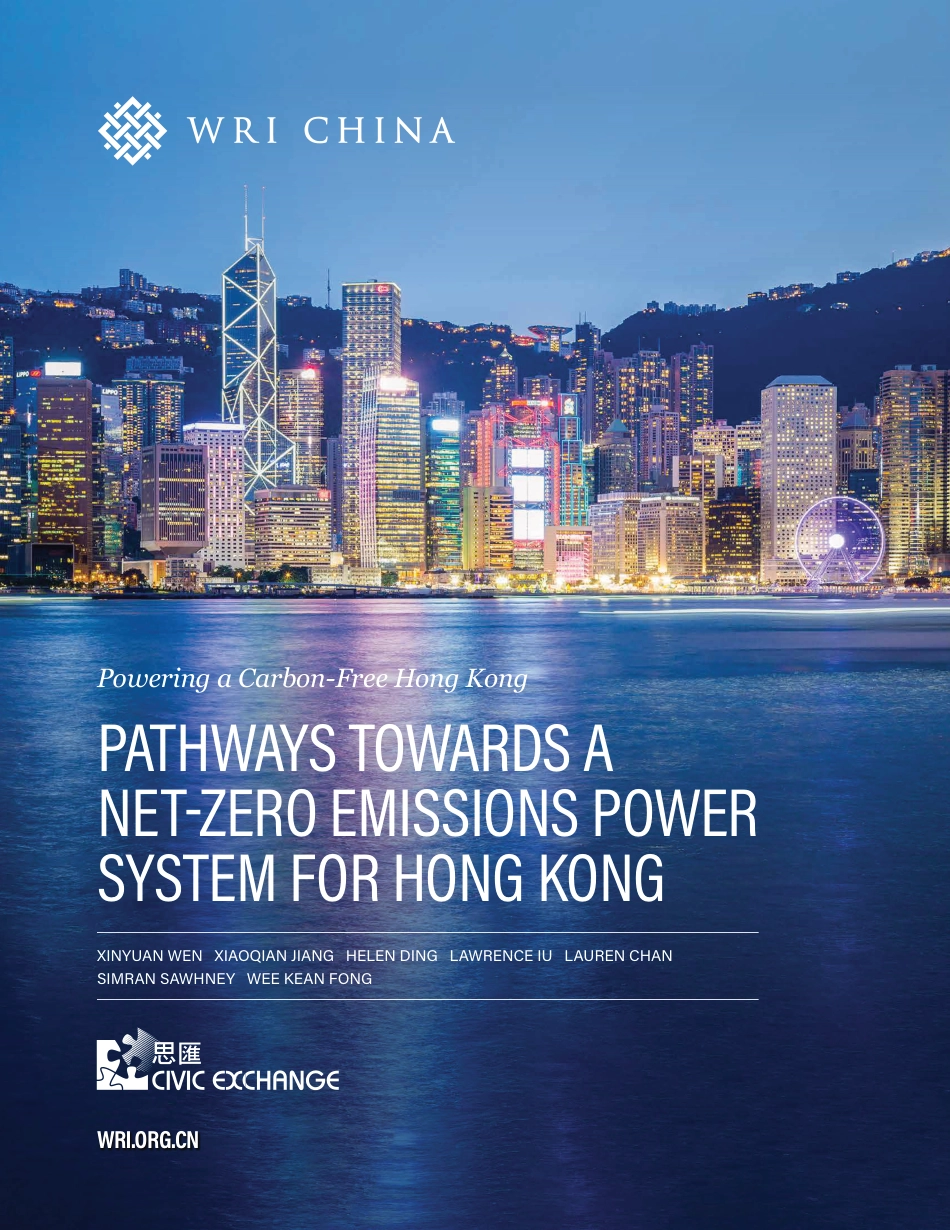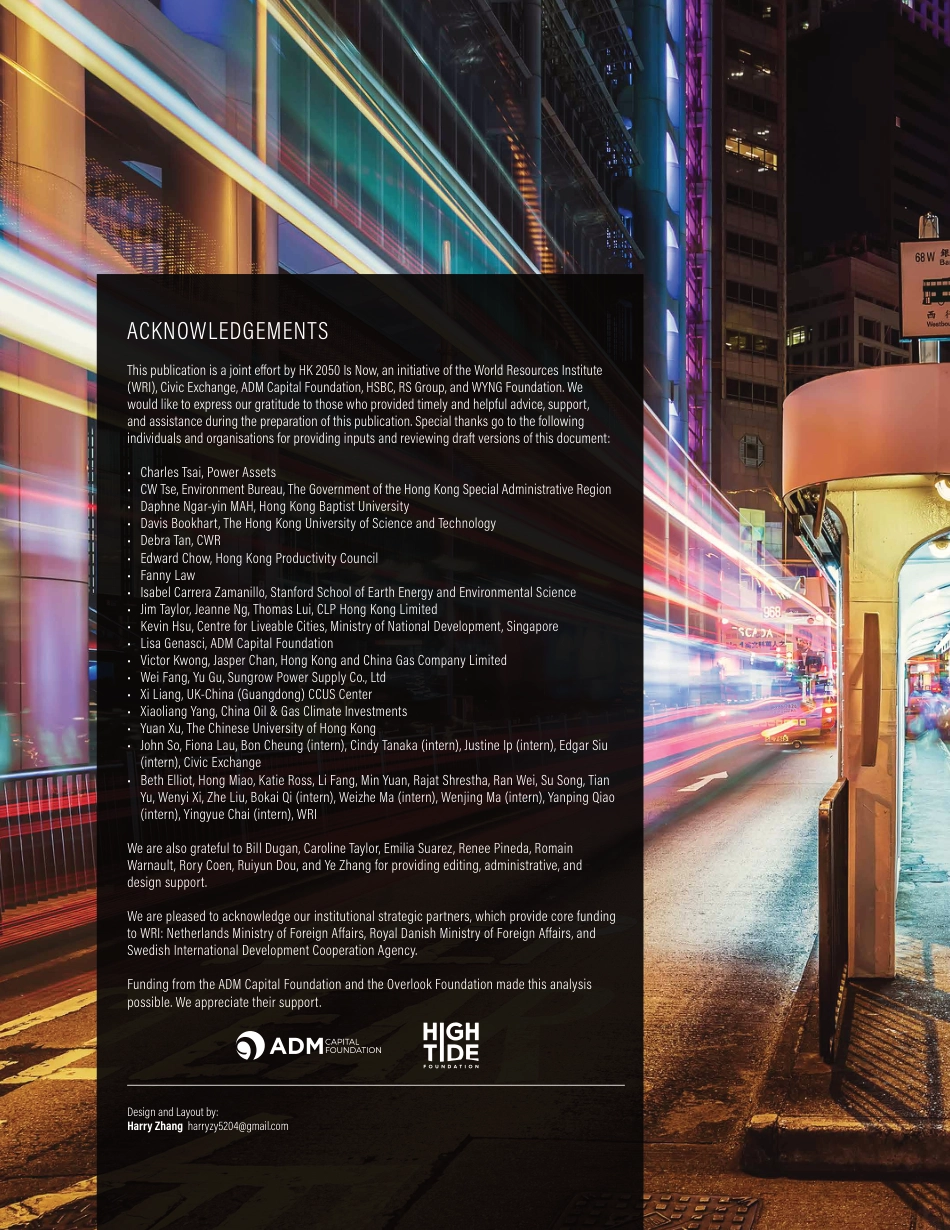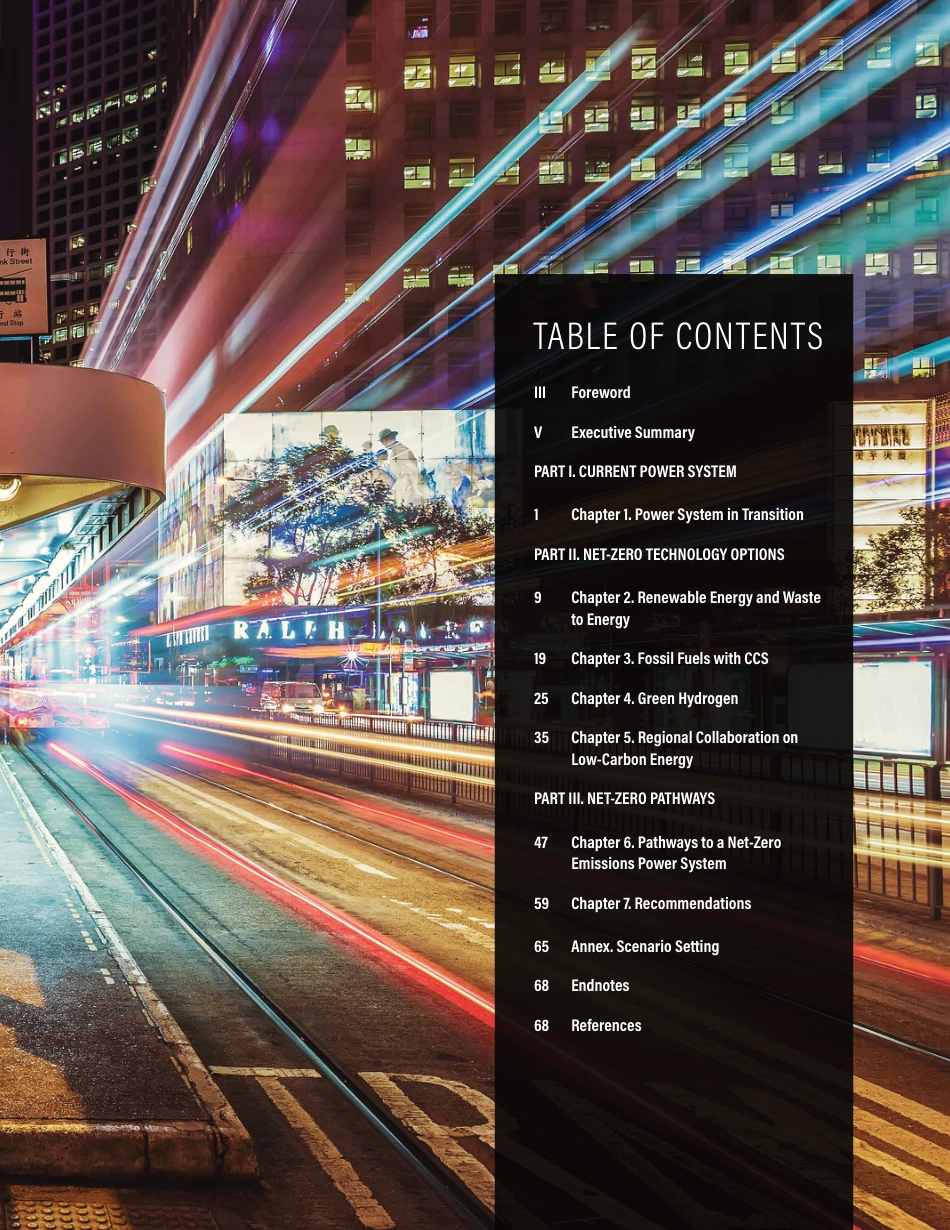POWERING A CARBON-FREE HONG KONG: Pathways Towards a Net-Zero Emissions Power System for Hong Kong1WRI.ORG.CNXINYUAN WEN XIAOQIAN JIANG HELEN DING LAWRENCE IU LAUREN CHAN SIMRAN SAWHNEY WEE KEAN FONG PATHWAYS TOWARDS A NET-ZERO EMISSIONS POWER SYSTEM FOR HONG KONGPowering a Carbon-Free Hong Kong2WRI.org.cnDesign and Layout by:Harry Zhang harryzy5204@gmail.comACKNOWLEDGEMENTS This publication is a joint effort by HK 2050 Is Now, an initiative of the World Resources Institute (WRI), Civic Exchange, ADM Capital Foundation, HSBC, RS Group, and WYNG Foundation. We would like to express our gratitude to those who provided timely and helpful advice, support, and assistance during the preparation of this publication. Special thanks go to the following individuals and organisations for providing inputs and reviewing draft versions of this document:• Charles Tsai, Power Assets• CW Tse, Environment Bureau, The Government of the Hong Kong Special Administrative Region• Daphne Ngar-yin MAH, Hong Kong Baptist University • Davis Bookhart, The Hong Kong University of Science and Technology • Debra Tan, CWR• Edward Chow, Hong Kong Productivity Council• Fanny Law• Isabel Carrera Zamanillo, Stanford School of Earth Energy and Environmental Science• Jim Taylor, Jeanne Ng, Thomas Lui, CLP Hong Kong Limited• Kevin Hsu, Centre for Liveable Cities, Ministry of National Development, Singapore• Lisa Genasci, ADM Capital Foundation• Victor Kwong, Jasper Chan, Hong Kong and China Gas Company Limited• Wei Fang, Yu Gu, Sungrow Power Supply Co., Ltd• Xi Liang, UK-China (Guangdong) CCUS Center• Xiaoliang Yang, China Oil & Gas Climate Investments• Yuan Xu, The Chinese University of Hong Kong • John So, Fiona Lau, Bon Cheung (inte...



